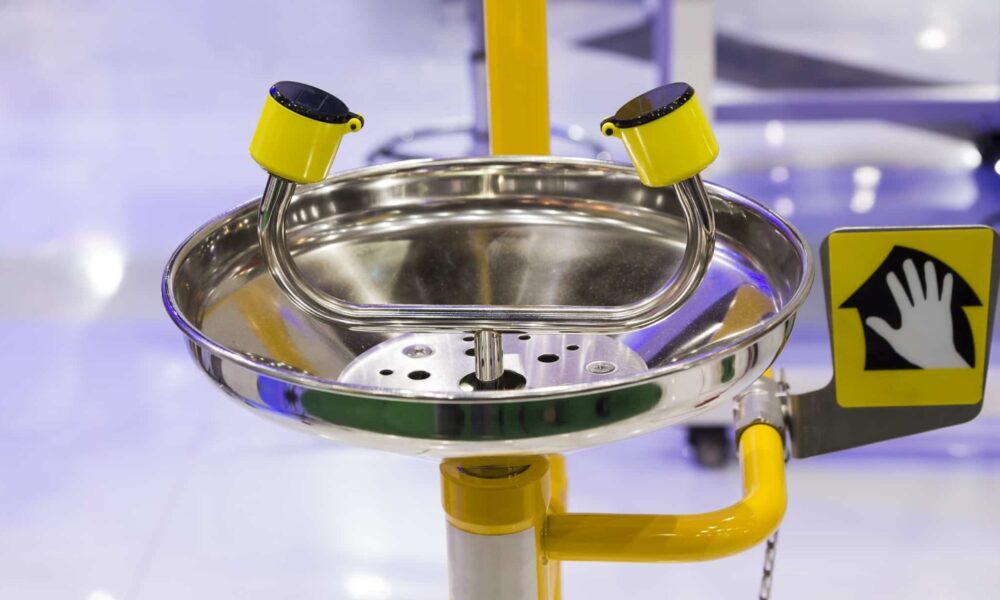Emergency Eye Wash Stations: Why Location and Accessibility Could Save Lives

When a workplace emergency strikes, every second counts. This is especially true in industries where employees are exposed to hazardous chemicals, airborne particles, or biological agents. Eye injuries caused by splashes, dust, or fumes can lead to permanent damage if not treated immediately. That’s where the emergency eye wash station comes in—not just as a compliance requirement, but as a genuine lifesaver.
In this article, we’ll explore why the location and accessibility of eye wash stations matter just as much as having them at all, and how thoughtful placement could mean the difference between full recovery and irreversible injury.
Why Emergency Eye Wash Stations Matter
The human eye is incredibly delicate. Even a few seconds of exposure to corrosive chemicals, extreme heat, or foreign debris can cause irreversible harm. According to the U.S. Bureau of Labor Statistics, thousands of workplace eye injuries occur each year, with many leading to days away from work or even permanent vision loss.
An emergency eye wash station provides workers with immediate access to flushing fluid that dilutes, neutralizes, or washes away harmful substances. OSHA (Occupational Safety and Health Administration) and ANSI (American National Standards Institute) set strict guidelines for when and where these stations must be installed, emphasizing the importance of both availability and functionality.
Location: The Critical Factor in Saving Vision
It’s not enough to simply install an eye wash station in the workplace. Its location can be the deciding factor in whether it actually saves someone’s eyesight. ANSI Z358.1 specifies that an eye wash station must be reachable within 10 seconds of the hazard, which equates to roughly 55 feet.
Imagine an employee working in a chemical lab. If a splash occurs and the nearest emergency eye wash station is across a maze of obstacles, precious time is lost. Those extra seconds can mean the difference between temporary irritation and permanent blindness.
Key placement considerations include:
- Proximity to hazards: Stations should be located near any area where chemicals, fuels, or hazardous materials are used.
- Direct line of travel: Workers must be able to reach the station without climbing stairs, opening doors, or navigating obstructions.
- Visibility: Stations should be clearly marked with bright signage and lighting, ensuring they’re identifiable even during an emergency.
Accessibility: More Than Just “Available”
Accessibility is often misunderstood as simply having an eye wash station. In reality, it’s about ensuring anyone can use it quickly, effectively, and without obstruction.
Common accessibility issues:
- Blocked equipment: Too often, eye wash stations are placed in corners or end up blocked by storage boxes, carts, or equipment.
- Poor maintenance: A clogged or nonfunctional station is as dangerous as having none at all. Units must be inspected and tested weekly.
- Inadequate training: Workers who don’t know how to operate an emergency eye wash station may hesitate or misuse it during a crisis.
- Incompatible design: Wall-mounted units, portable stations, and plumbed stations each serve different needs. Choosing the wrong type for the environment reduces effectiveness.
Real-World Scenarios: When Location Saves Lives
Consider these examples:
- Chemical Lab Incident: An employee accidentally splashes sulfuric acid into their eye. The lab’s emergency eye wash station is located just steps away, allowing immediate flushing. Result: full recovery with no permanent damage.
- Manufacturing Plant Oversight: In another facility, a worker is splashed with cleaning solvent, but the nearest station is two rooms away. By the time they reach it, the solvent has already begun to burn their cornea. Result: partial vision loss.
- Dust Exposure in Construction: Portable stations placed strategically around a construction site enable workers exposed to dust clouds to quickly rinse their eyes. Result: reduced downtime and injury prevention.
These situations underline a powerful truth: proximity and accessibility directly influence outcomes.
Designing a Safer Workplace with Eye Wash Stations
Creating a safe workplace isn’t just about compliance—it’s about foresight. Here are key steps every safety manager should take:
- Conduct a Hazard Assessment
Identify where employees are most at risk of eye exposure. Consider not only chemical use but also dust, sparks, or biological hazards. - Follow the 10-Second Rule
Ensure no worker has to travel more than 10 seconds to reach an emergency eye wash station. - Plan for Accessibility
Keep stations free of obstructions, at the correct height (ANSI recommends between 33 and 53 inches from the floor), and usable without tools or keys. - Choose the Right Type of Station
- Plumbed stations: Best for permanent facilities with consistent water supply.
- Self-contained/portable stations: Ideal for remote or temporary worksites.
- Combination units: Include eye/face wash and shower capabilities for maximum coverage.
- Train Employees Regularly
Workers must know where stations are, how to operate them, and how long to flush (at least 15 minutes in most cases). - Maintain and Test Equipment
Weekly checks and activation prevent buildup of sediment or bacteria and ensure functionality when it’s needed most.
The Compliance Angle: OSHA and ANSI Standards
Beyond life-saving potential, proper placement of an emergency eye wash station is a regulatory requirement.
- OSHA: While OSHA does not have a standalone standard, it refers to ANSI Z358.1 for guidance in various regulations related to hazardous substances.
- ANSI Z358.1: This widely recognized standard outlines performance and installation requirements, including water flow rates, temperature (tepid water between 60–100°F), and accessibility.
Failing to comply doesn’t just risk worker safety—it also opens businesses to fines, lawsuits, and reputational damage.
The Human Cost of Neglect
Statistics tell one part of the story, but the human impact is what truly underscores the importance of eye wash stations. Eye injuries don’t just affect productivity—they alter lives. A worker who loses vision may face lifelong disability, emotional trauma, and financial hardship. For employers, the moral responsibility of ensuring worker safety should outweigh any concerns about cost or convenience.
Simply put: investing in well-placed, well-maintained emergency eye wash stations is investing in people.
Every Second Counts
An emergency eye wash station is one of the most important safety assets in any hazardous workplace. But its true effectiveness depends on two factors: location and accessibility. A perfectly functional station hidden away in a back room is nearly useless during a real emergency.
By strategically placing stations within 10 seconds of hazards, ensuring clear access, training employees, and committing to regular maintenance, businesses not only stay compliant—they save lives.
When it comes to protecting vision, seconds matter. Make sure your workplace is designed to give every employee the chance to act fast and recover fully.

Source: Emergency Eye Wash Stations: Why Location and Accessibility Could Save Lives




